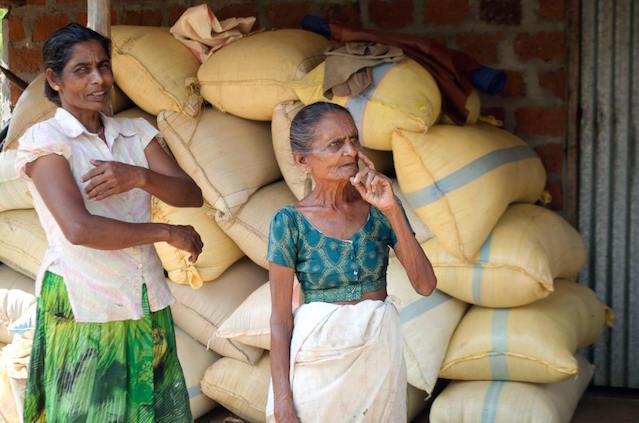Restoring Sustainability To Sri Lankan Agriculture
By Ranil Senanayake –October 3, 2015

Sri Lanka maintained a massive highland soil ecosystem that was untouched until the advent of the colonial experience. The rice farming soils as well as the agroecosystem was a co-evolved system that maintained its production potential for literally thousands of years. History demonstrates that the great soil capital of this nation was lost with the advent of colonial plantation agriculture and the advent of ‘modern agriculture’ destroyed the remaining productive potential of our farming soils.
To appreciate this loss and the consequent dependency on chemicals to farm, the action of the soil ecosystem should be appreciated. Farming and forest soils are very energetic ecosystems. It has been estimated that a gram of good farmyard soils can contain about 1 billion individual bacteria, over 100 million individual actinomyctes and over 1 kilometer of fungal hyphae, notwithstanding plants like algae and animals like collembolids, nematodes or worms. In total these microorganisms add up to about 7-11 tons of living matter per hectare in the top 15 cm of soil. It is this living matter providing about 6-10 horsepower of free energy per day that maintained the fertility of our traditional agriculture. These soils did not require anything more than small additions of organic matter to maintain its productivity and the farmer was able to provide that through traditional practices without external inputs.
 During the early part of the 1960’s when there was a great emphasis on developing our agriculture, it was noticed that the yields were lower than our neighboring countries. The reasons were, poor seed and heavy weed infestations. The School-weeding program instituted in the late 60’s was recorded by National Geographic to increase yield by 200 % by simply weeding the fields at the right time by hand. With the advent of the ‘Green Revolution’ that promoted chemical and high-energy input farming systems, our farmers lost their ability to independently manage their farms and over the years and generations, lost their indigenous farming knowledge and practices. Read More
During the early part of the 1960’s when there was a great emphasis on developing our agriculture, it was noticed that the yields were lower than our neighboring countries. The reasons were, poor seed and heavy weed infestations. The School-weeding program instituted in the late 60’s was recorded by National Geographic to increase yield by 200 % by simply weeding the fields at the right time by hand. With the advent of the ‘Green Revolution’ that promoted chemical and high-energy input farming systems, our farmers lost their ability to independently manage their farms and over the years and generations, lost their indigenous farming knowledge and practices. Read More
